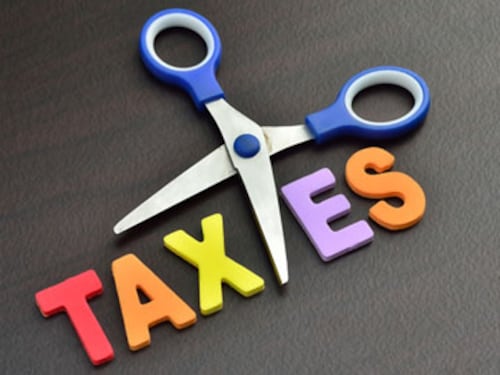The good and bad in reducing tax rates
Any reduction in the maximum rate will be viewed pro-rich


Union Finance Minister Arun Jaitley will present the General Budget for 2016-17 on February 29 in the Lok Sabha. We look at some of the issues related to reduction in tax rates.
The current challenges:
&bull Historically, India has continuously used tax policy as a tool to drive investments in the much-needed sectors of the economy like infrastructure, backward states, etc. This has led to several sector/ area-based and other tax incentives resulting in overall effective tax rate being lower than the headline corporate tax rate of 30 percent (34 percent with surcharge and cess).
&bull With the objective of simplifying the tax regime, the finance minister had spoken of a 5-year tax road map which on the one hand reduces the corporate tax rate to 25 percent, and eliminates tax incentives on the other.
&bull While the objective is laudable, the challenge the government will have to address is manifold – balance fiscal deficit, kick-start capex cycle by incentivising investments in infrastructure, Make In India, startups, etc.
&bull On the personal tax rates, any reduction in the maximum rate (30 percent) will be viewed pro-rich. In any case, it impacts only a small population (only about 3.5 percent pay income tax) and may not have any substantial benefit in boosting the economy.
What change is expected this budget:
&bull The corporate sector hopes the FM to walk the talk by reducing the headline tax rate by 1 percent for FY 16-17.
&bull At the same time, businesses will hope that a definite road map to reach 25 percent is clearly laid out along with the phasing out of the incentives. This will facilitate decision-making in evaluating new projects.
&bull On the personal tax front, one does not expect reduction in headline rates. Possibly the reduction in the effective tax rate may be passed on to individuals by way of enhanced deduction for investments in saving instruments (bonds, PPF, etc), education or health care or reworking of the income slabs in light with inflation.
&bull HNIs may have to brace up for a higher effective tax rate in some form or the other (for instance a top-up 10 percent rate on dividend income, etc.).
The impact:
&bull The corporate tax rate changes will have a positive impact for the FMCG, manufacturing and services sector in general but can impact businesses in the pharma, IT and infrastructure sectors, all of the latter enjoy some or other tax incentives.
&bull Personal tax changes can positively impact the financial services sector by encouraging savings.
- By Vishal J Shah, Partner – Direct Tax, PwC India
First Published: Feb 24, 2016, 06:42
Subscribe Now